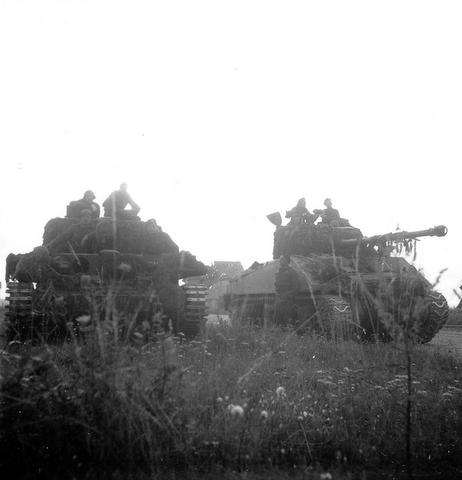The Sherman VC "Firefly"


During WWII's Normandy Campaign the inability of Allied tanks to compete against their German foes, primarily in terms of armored protection and armamanent, was and remains today a fairly well known story. Nevertheless, what is often forgotten is that by the summer of 1944 the British had found a simple, relatively cost effective solution to the problems posed by hard hitting German AFV's (Armored Fighting Vehicles).
What the British had discovered was that if they took a 17-pounder L/55 anti-tank gun and employed tungsten armor-piercing rounds powered by a higher than normal amount of propellant then they had a tremendously effective anti-tank weapon. In fact, tungsten anti-tank rounds fired from the 17-pounder gun could penetrate the Panzer IV’s frontal armor at ranges reaching 2000 yards, a Panthers’ frontal armor at around 1,200 yards, and a Tiger's armor at approxmiately 500 yards range. Even better, the British quickly realized that the existing M4 Sherman, the medium tank that overwhelmingly equipped the bulk of Allied armored units, could accommodate this weapon. This vastly improved Sherman tank was designated the Sherman Vc “Firefly” (see pictures accompanying this post, with a Cromwell tank in the second image and on the left in the picture, and from the Canadian National Archives courtesy of PhotosNormandie). Of course, the Firefly still lacked adaquete armored protection, but it at least had a main gun that could match the firepower of German panzers.
Unfortunately, many ranking American officers denigrated this otherwise excellent stopgap solution - ironically turning the idea of Yankee ingenuity on its head. As a result, and because of British economic handicaps, American inflexibility, and in spite of the fact German tanks, assault guns, and tank-destroyers were decimating Allied tank battalions and brigades; a total of only 109 Fireflies had arrived in Normandy by the end of June. Accordingly, during the summer of 1944 Allied tankers would continue to pay a heavy price for the failures of their leadership.



Post new comment